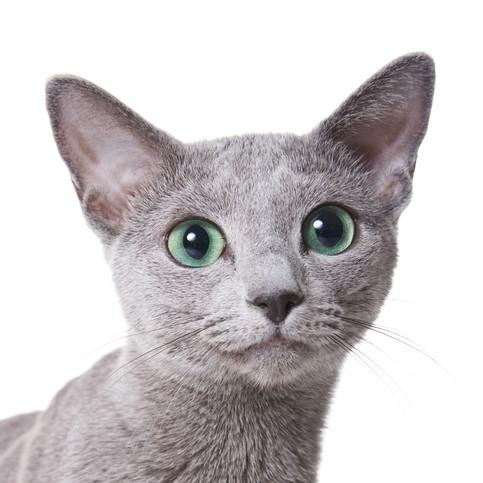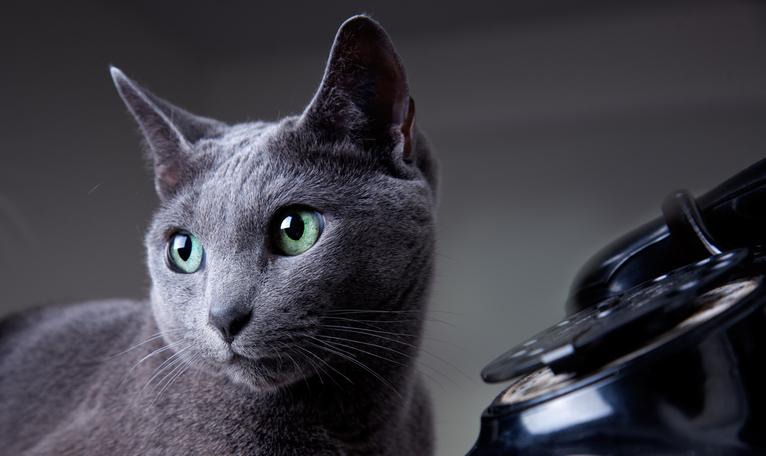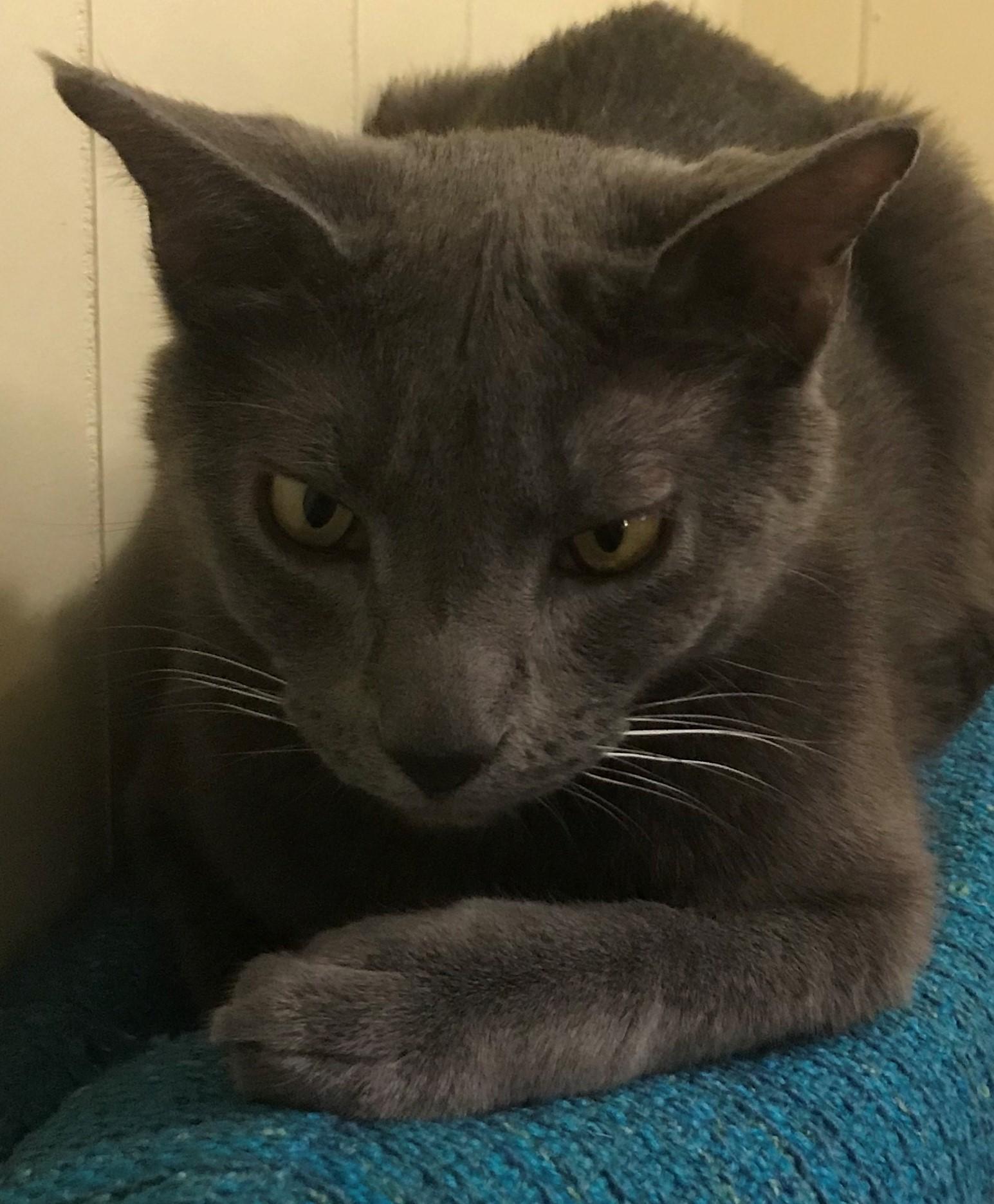Russian blue

The Russian blue Cat is undoubtedly one of the most popular and beautiful felines. If you are thinking of adopting a cat of this breed, you must be informed of their character, hair care or specific traits they possess. AnimalWised will explain everything you need to know about the Russian blue, including types, photographs and interesting information on their necessary care. Keep reading and find out more!
- Asia
- Russia
- Category IV
- 7-11
- 11-13
- 13-17
- 17-22
- 22-30
Origin of the Russian blue
There are several theories about the origin of the Russian blue cat, but the most popular is certainly that of the archangel cat. The first mentions about this breed explain how the first few cats were found in the port cities of the north of Russia, in the archángel islands - hence their nickname! Another story suggests that the breed had been kept secret for generations because they were considered a very exclusive cat, which should only accompany the Zares.
From their beautiful appearance, the Russian blue cats acquired popularity quickly and the British decided to export them to the United Kingdom. To avoid the excessive inbreeding and raising of cats with a significant degree of kinship, it was decided to cross the Russian blue cat with the british shorthair and the blue Siamese. The fruit of this union resulted in a spectacular Russian blue cat with striking green eyes. Later, miscegenation was condemned because it gave way to "improper" forms of the Russian blue.
In the United States, some breeders imported Russian blues, in a bid to obtain some more stylized minors. Due to the different crosses that we have today, there are several types to distinguish between the Russian blue cats.
Physical characteristics of the Russian blue
The main feature that makes the Russian blue unmistakable is their short, silky, dense, cloak-like coat that resembles a plush toy. They are a uniform, bright blue color. They have large, rounded eyes of an intense green color, contrasting with their impeccable mantle. The shape of the head is a wide and medium wedge, with a flat top and a straight profile nose. The ears are wide at the base and are slightly turned outwards. They are medium in size, have fine bones and are muscular.
Types of Russian Blue Cat:
- English: The English type is bulkier and their head seems more rounded. The base of the ears is wider and the eyes are slightly smaller.
- Continental: They are finer and more stylish than English. Their limbs are long and thin, and the size of their eyes is slightly bigger.
- Scandinavian: They are muscular, like the English, but more stylized.
- American: The American is undoubtedly the longest, thinnest and most stylized type of Russian blue cat.
Temperament
Russian blue cats often have very strong links with their family and especially with one particular member. They are calm and affectionate , however, they are usually reserved with strangers, like practically all cats. They are very tolerant cats with children, but we must ensure our children are aware to be gentle with the cat; they cannot pull their tail or annoy them.
They can adapt well to living in an apartment, as long as they receive constant affection and exclusive hours of play. Loneliness is not a good ally of this race, who will undoubtedly need an affectionate and homely family.
They stand out for their intelligence. They will learn their name very quickly and use different resources like the scratching post or litterbox. Likewise, they can learn to sit, to catch toys, etc. For this we must boost their skills from an early age and stimulate them on a regular basis.
Caring for a Russian blue cat
To ensure that our Russian blue is well taken care of, we will not need to do many things, just regularly brushing their coat to keep them clean and we will not need to bathe them unless they are really dirty. Remember that cats clean themselves and do not need to bathe regularly as we do with dogs.
If they have learned to use the scratching post correctly, we will not need to cut their claws. We will only need to check their ears occasionally to make sure they do not suffer from a mite infestation as well as their mouth and body in general to promptly detect any problems.
You should choose a quality feed or make homemade recipes , always consulting with the veterinarian so not to generate deficiencies in their diet. Do not forget that the feeding you provide your cat will be reflected on their coat. So, give them good food and you will see much brighter and beautiful hair, as well as good general health.
Do not forget to place the litterbox, food and their bed in separate areas, as cats do not usually accept these elements when they are too close. It is also advisable to have various toys, especially the "fishing rod" type which they love, as they can interact with us.
Health
It is generally said that the breed has a high health status, however, especially pedigree Russian blues can suffer a series of congenital diseases, especially if inbreeding (not only father-daughter, but also grandfather-granddaughter). The diseases that most affect this race are:
- Hypertrophic cardiomyopathy
- Polydactyly
- Genetic mutations
We should also note that the Russian blue cat is susceptible to infectious or parasitic diseases much more easily, such as:
- Feline AIDS
- Giardiasis
- Chlamydia
- Bordetella
- Ringworm
To maintain optimal health in our feline, it is always advisable to strictly follow the cat vaccination schedule, as well as the external and internal deworming, especially if they have access to the outside. Following these tips, the Russian blue cat can live between 10 and 15 years, although they have been known to reach 21 years!
Russian blue photos















